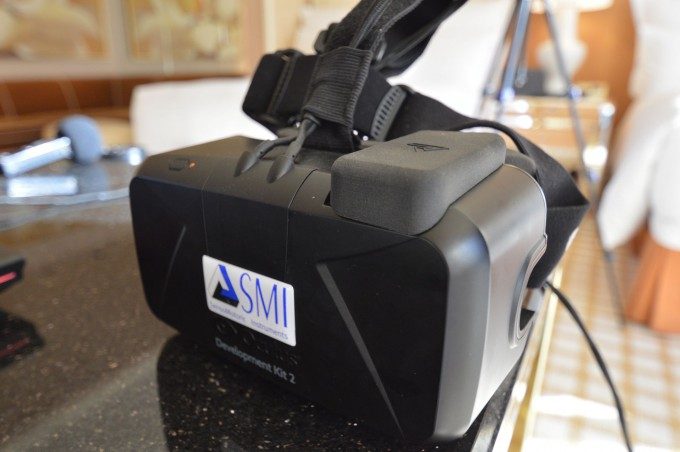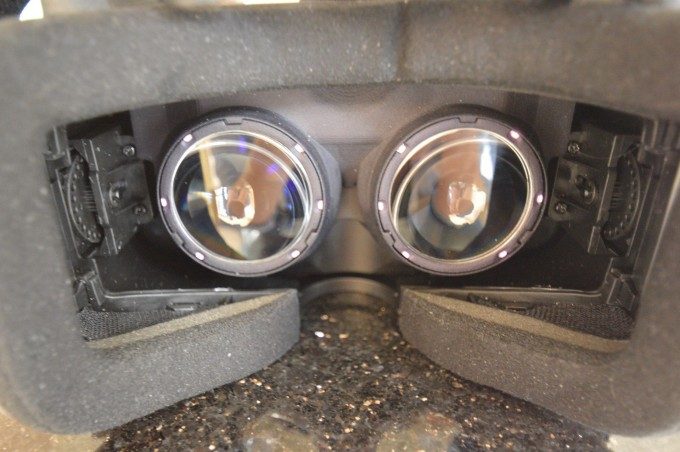Having demonstrated their impressive eye-tracking and foveated rendering technology to us at CES last month on a modified Oculus Rift DK2, the company have now unveiled they’ve applied the same principals and technology to Samsung’s mobile VR headset, the Gear VR.
SMI demo’d their eye-tracking technology to us at CES last month and along with our first glimpse at foveated rendering, all on a heavily modified Oculus Rift DK2. The demonstration proved not only that SMI’s gaze detection systems were worked, they were quick enough to allow the implementation of foveated rendering almost imperceptibly.
What we weren’t allowed to talk about though, was that SMI had plans beyond the desktop VR hardware space. At CES I got my hands and eyes on a modified Zeiss VRone headset, powered by an Android smartphone. The headset included a retrofitted version of SMI’s eye-tracking assembly and an early integration of their software. The mobile VR demo included a near identical version of the ‘exploding box’ demo seen in the demo series below. With the exception of a noticeable increase in eye-tracking latency (and therefore overall timing accuracy) it was an impressive demonstration of the company’s portability and commitment to getting this system right for multiple VR platforms.
Now, SMI are ready to show more about their mobile VR eye-tracking plans, and they’ve revealed that they’ve now managed to ‘upgrade’ Samsung’s Oculus engineered Gear VR headset with eye-tracking and are ready to demonstrate foveated rendering for mobile VR.

We asked SMI’s Executive of OEM Solutions Christian Villwock, to give us a summary of progress since CES. “At CES, I’ve shown you an early prototype based on the Zeiss VRone which is a Google Cardboard design using the Cardboard SDK and running on Android – Cardboard is not really optimized for running on Android with low latency,” Villwock says. “Our focus in the last weeks was on adding eye tracking to the Gear VR – the Gear VR with its software is much more optimized and tweaked for VR under Android, especially for latency. Our eye tracking platform is generally available for integration with all mobile VR headset but our reference design that we’re launching at MWC now is based on the Gear VR.”
Foveated rendering is a rendering technique that takes advantage of the fact that your eye perceives high levels of detail only within a small area of focus at any one time. This means that, an image can be rendered at increasingly lower levels of detail, potentially imperceptibly, the further from that area of focus you go. Less pixels to push means less clock cycles, means less power used means higher frame rates. At least that’s the theory.
Arguably, the benefits that foveated rendering might bring to the mobile VR space are greater than that in the current desktop arena. The ability to decrease load drastically on comparatively lowly mobile silicon will become more and more important as the expectations of consumers grow in the Mobile VR space.
SMI will unveil their Gear VR eye-tracking hardware and foveated rendering demo’s at the Mobile World Congress in Barcelona from the 22nd February. Road to VR will be there to go hands on with SMI’s latest push into eye-tracking applications.







